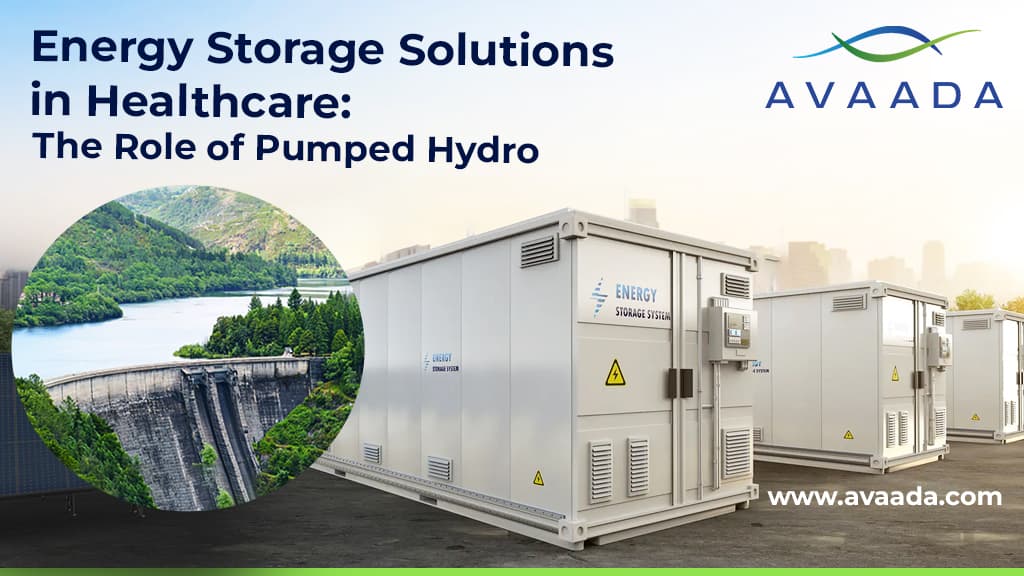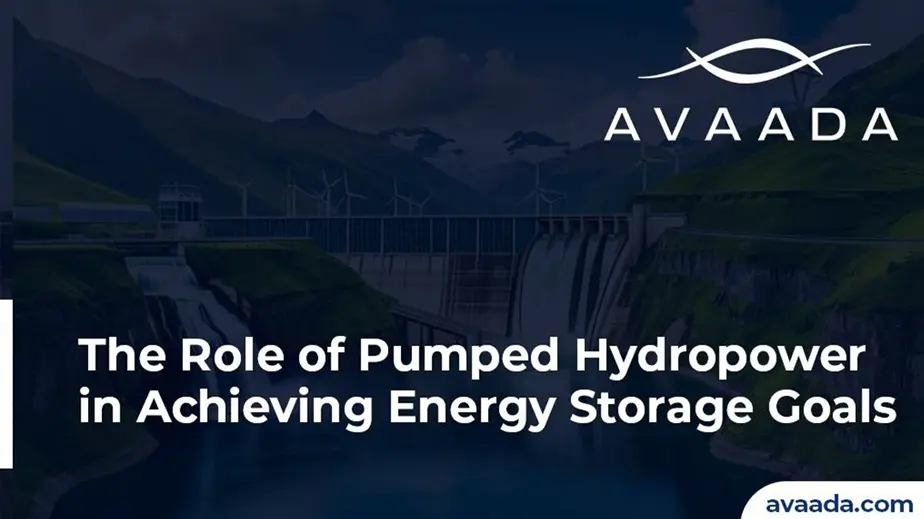The healthcare industry, known for its round-the-clock operations and critical service delivery, relies heavily on an uninterrupted power supply. Sustainability and resilience in power supply are now the next frontiers in the continuous quest for better health facilities. Energy storage solutions, especially green energy storage options like pumped hydro storage, are gaining increasing prominence.
Pumped hydro storage (PHS) stands out as a robust, green energy storage solution, offering healthcare facilities an efficient way to store and manage energy. Here’s how pumped hydro storage works and why it’s especially beneficial in a healthcare setting.
What is Pumped Hydro Storage?
Pumped hydro storage is a type of energy storage system that stores excess electrical energy during off peak hours and generated when energy demand spikes by moving water between two reservoirs at different elevations. During periods of low energy demand (or when surplus renewable energy is available from other sources like Solar, Wind etc), electricity pumps water from a lower reservoir to an upper reservoir. Subsequently, when there is shortage of power supply or no power availability, the stored water is released back down to the lower reservoir, passing through turbines to generate electricity. This process allows pumped hydro storage to act as a “battery” that can be tapped into when needed, ensuring a reliable power supply.
Benefits of Pumped Hydro Storage in Healthcare
Health care institutions are gradually shifting to renewable sources of energy in a bid to decrease carbon emissions and improve energy security. There is a reason why pumped hydro storage is perfect for these institutions:
Scalable Backup Power
Healthcare institutions cannot afford power interruptions. Essential equipment such as life support systems and other essential services run on a steady supply of power 24/7.
Pumped hydro storage provides this type of redundancy by offering bulk backup when there is an outage or it is on-peak demand. Hospitals and clinics can continue to operate without relying on backup generators exclusively from fossil fuel.
Green Energy Storage
Many of the health facilities are embracing renewable sources of energy, like solar or wind. Unfortunately, some forms of renewable energy can only be intermittent-solar when it’s not too sunny or wind when it’s very still-and may create gaps between energy availability at times of low sun or wind. An excellent green energy storage solution would balance out these fluctuations, allowing the health facilities to store any excess in renewable energy at one point when production rates are highest and then access it at other times as needed.
Explore more about the Advantages And Importance Of Renewable Energy.
Cost-Efficiency Over Time
Though a pumped hydro storage system comes with a rather expensive set-up cost, it is very cost-effective in the long run. A pumped hydro system has long operational life with very low maintenance cost and having no degradation of battery system against conventional batteries used in systems that degrade with time and require frequent changes resulting in cost & disposal concerns. Healthcare facilities can also benefit in terms of cost savings as well as minimizing regular infrastructure upgrades.
Higher Energy Autonomy
The pumped hydro storage system can offer energy independence, or at least a degree of it, to healthcare facilities, making the facilities less dependent on the grid and therefore offering more resilience to disruptions on the grid. It is particularly useful for rural or isolated healthcare centers, as power supplies will be interrupted more frequently or even prove elusive.
Comparison with Other Energy Storage Options
To come to a concrete conclusion, let’s compare pumped hydro storage with the most common alternatives in the health sector. Each has unique advantages. Here’s how the two compare: Lithium-Ion Batteries: Lithium-ion batteries are the most popular battery for energy storage and tend to degrade over time and need replacement periodically. They are usable for small applications but can’t be scaled or trusted over a long period of service as pumped hydro storage, particularly for large health centers.
Compressed Air Energy Storage (CAES): CAES systems use compressed air to store energy that is released in the form of generation during peak demand time. However, these are usually less efficient than pumped hydro storage and also could not be as easy to site in urban areas.
Thermal Storage: This has limited applications in heating, ventilation, and air-conditioning but does not produce electrical power on demand as with pumped hydro storage and therefore cannot be used very often as a primary backup system.
Implementation Considerations for Pumped Hydro Storage in HealthCare
Infrastructure investments: The initial setup for pumped hydro storage requires space for the two reservoirs at disparate elevations. It would be challenging to execute such a scheme in highly populated districts, whereas it could be plausible for rural health facilities or large campuses.
Regulatory Compliance: The forming and operation of pumped hydro storage system may be subject to the environmental and energy regulation. Health facilities and hospitals should consult with the relevant authority towards adherence to the local standards on the environment, as well as safety.
Long-term Planning: For long-lived and durable pumped hydro storage, facilities will need to factor long-term power requirements into their operations and growth potential to optimize this investment.
Future of Pumped Hydro Storage in Healthcare
Pumped hydro storage is becoming a possible option for health facilities as they look to safe and sustainable energy options. With green energy technology advancing and continuously accumulating the need to integrate renewable energy into their systems, pump hydro storage systems are likely to see increased uptake by hospitals, especially in areas where grid reliability remains a concern.
Moreover, as governments and other organizations increasingly champion sustainability and low-carbon development, financial incentives may develop to support green energy storage solutions like pumped hydro storage. That would make it more affordable and accessible to more healthcare providers.
To know more about the Benefits of Using Abandoned Mines for Pumped Hydro Storage.
Conclusion
In an industry as vital to society’s well-being as healthcare, energy resilience and sustainability are of the utmost importance. Pumped hydro storage is a feasible, long-lasting source of energy that is environmentally friendly to healthcare facilities in terms of storing green energy efficiently and providing backup power. The quest for alternative sources of sustainable energy makes pumped hydro storage most probable to take on the important role of maintaining the availability and sustainability of health care facilities through offering a safer environment for patients and the workers in healthcare service delivery.
Pumped hydro storage will surely be one of the cornerstones on this road to a greener, more resilient healthcare industry-as evident in the clearer benefits and long-term sustainability of such.









